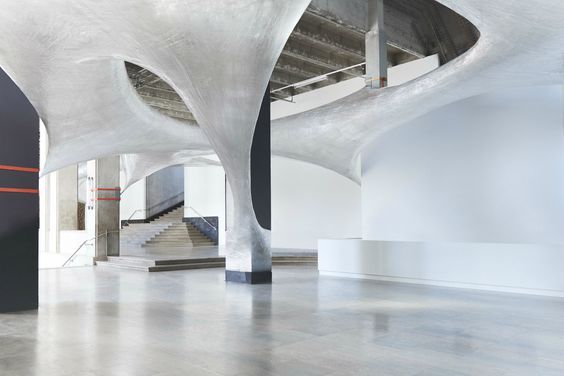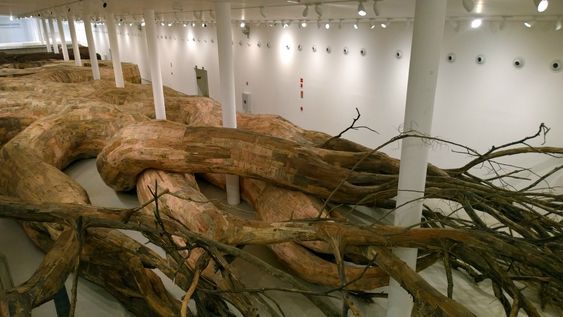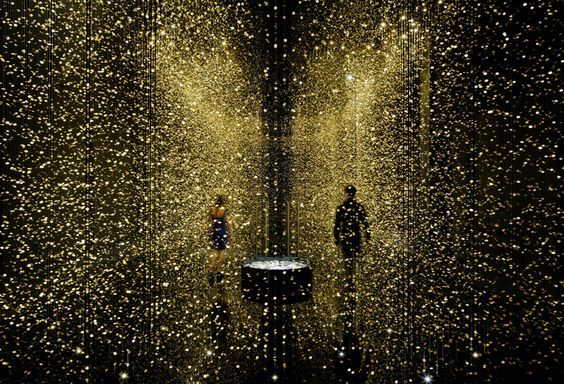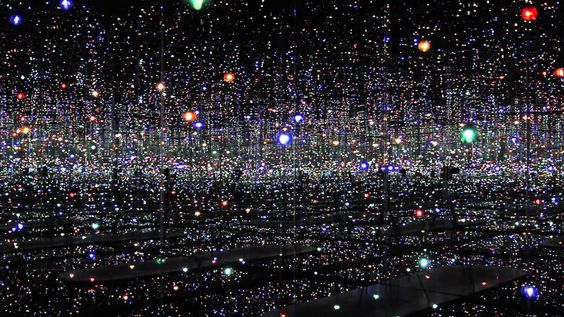Do you remember Alice’s delirious adventures of Wonderland? Such experiences which transport us into unknown realms, plenteous with uncertainty, surprises, and amazement, are much sought after. Not only do they offer a discontinuance from the mundane, but also evoke certain emotional responses. Obviously, the purpose of such expressions is not to recreate a world of madness or suspicion, but to extend the possibility of a world, where what we see is not simply what it looks like. They introduce a world of infinite interpretations, myriad experiences, and possibilities, and there is nothing that can better does that than fine installation artworks.
Many artists intend to arouse ‘wonder’ and ‘curiosity’ into the minds of their audience. Their artworks, with or without architectural accompaniment, induce experiences. Here are some of the most astonishingly expressive art installations. Walking into any of these, or just imagining a walk-through, invites the same marvel that one can relate to what it might have been like to stroll in ‘Wonderland’.
-
Digital mega-mural by Arno Coenen+ Iris Roskam
Here, art is to transform an indoor market with the humdrum of fish stalls and butchers into an extraordinary space, vibrant with colorful digital renderings overhead and all around. Dutch artist Arno Coenen and Iris Roskam designed ‘Horn of Plenty’, an expansive digital envelope over Markthal, Rotterdam. Their design has transformed the market into a colorful voluminous vault, with larger than life visualizations of fruits, veggies, grains and flowers. The constantly tossing and turning animations spellbind the visitors by their abundance and scale. This panorama gives us a preview of how lively it feels to be there.
-
‘The key in Hand’ and other installations by Chiharu Shiota
Chiharu Shiota, is an artist who transforms any gallery into a memorabilia of melancholy, immersion, and disturbance. Her work ‘In Silence’ interpreted an abandoned piano concert, with objects frozen in time, under recurring layers of black threads. An incinerated piano, addressing an invisible audience, sits slyly with burnt empty chairs, all woven into the black disruptive mesh. Her recent work, ‘The Key in the Hand’ explores the memory through something “familiar and valuable” as a key. It revolves around the idea of how a ‘key’ as an object, signifies people, spaces, and unknowns. This poetic entanglement of red threads crisscrossing across a large space, with 50,000 keys, given to the artist by all sorts of people, suspended downwards, expresses recollections of countless memories imbued into a warm ambiance.
-
‘Breathing Light’ by James Turrell
James Turrell uses light to create sensorial experiences which pose a clear question, “We usually look at what the light reveals; but what is it like to look at the light itself?” Turrell’s art is based on light and space. His exhibitions evoke certain psychological responses, and yet, they’re all based on the subjective perception of space due to the presence of light. It’s interesting to see how a singular space transforms into multiple spaces and a two-dimensional plane becomes a three-dimensional space, just by the illusionary terpsichore of light. One moment, a person feels the embrace of space.; the next, there is no space, no corners, and no edges.
-
‘Transarquitetônica’ by Henrique Oliveira
The gallery at MAC USP, São Paulo, was transformed into a giant network of knotted tree roots. The concept of ‘Back to the Roots’ was translated into a flow of tunnels and artificial grottoes made out of ‘tapumes’, a cheap plywood derivative from Brazil. These corridors, which are accessible through multiple openings, welcome any visitor and give them a dilemma. Spectators are exposed to a series of contrasting spaces, to actualize the stark difference between man’s first dwelling and the modern day architecture. Here is another installation by the same artist at Palais de Tokyo, whereby contemporary architectural elements like beams and columns, dissolve into the branches of a tree.
-
‘WasteLandscape’ by Clémence Eliard + Elise Morin
Clémence Eliard and Elise Morin, an architect-artist duo designed an undulating landscape of mounds and troughs, over 500 sqm of space at Halle d’Aubervilliers in Centquatre, Paris. The idea was to satirize the life cycle of artificial objects, accumulation of waste, and waste treatment. So the team collected, sorted, and hand-sew 65,000 CDs, turning them into dunes of shiny aluminum. These bulbous forms contradict the backdrop of classic French architecture. This way, it is ensured that once they have been exhibited, these non-biodegradable CDs can be recycled appropriately.
-
‘Tape Paris’ by Numen/For Use
Numen/ For Use designed this installation using an everyday material like scotch tape to derive an experiential setup. Titled ‘Tape Paris’, this installation is one of the many installation artworks of group’s Tape series. Exhibited at the Palais de Tokyo in Paris, this installation is composed of tunnels which stretch across space like translucent ‘biomorphic skin’. This collective explores the physical and the metaphysical presence of space, by an unleashing design spanning across a large gallery. When experienced from within, a visitor moves across a sequence of funneling elastic volumes, suspended six meters above the gallery foyer. Click here for details.
-
‘Light is Time’ by Tsuyoshi Tane (DGT Architects)
This installation emerges from the realization of combining all the elements of a triad: space, time, and light. Commissioned by the Japanese watch company Citizen and designed by Tsuyoshi Tane, the installation featured 80,000 suspended main plates, the basic component of a watch. It was unveiled at the Milan Design Week in April 2014. The experience of the space was orchestrated with sound and light effects by LUFTZUG. The glittering texture of these dials, forming a golden bokeh, persuades a visitor to contemplate on various ideas like the mysteries of the universe, the retrospective of timepieces across time, or an introspective journey. One can feel the wonder by playing this walkthrough video across the installation.
-
‘I Who Have Arrived in Heaven’ by Yayoi Kusama
Imagine a space odyssey, as described by Arthur C. Clarke, or the stunning visuals featured in the film ‘Interstellar’, and here you have an artist who is not only imagining them but also recreating similar experiences. These installations are the brainchild of the 87-year-old Japanese artist Yayoi Kusama. The visuals show how a visitor is mystified into a spatial illusion created by a spectrum of LED lights, arranged to resemble a ‘sky full of stars’. The use of mirrors creates infinite reflections, leaving the visitor speechless. The lights are flickered on and off to create a sense of awe at the expanse of the universe. Here is more on the captivating installation and the artist.
-
‘Experience’ by Carsten Höller
Very true to its simplistic title ‘Experience’, this exhibition by Carsten Höller, is an example of unforeseen views of disconnected spaces,; and yes, this is how it offers an omnibus walk-through, creating a totally delusional experience, much similar to that of Alice in Wonderland. Höller’s art is meant to be experienced and not just seen. The exhibition has an enormous centerpiece – a glass and metal slide, connecting the floors of the gallery. As one slides downwards, they catch glimpses of dissimilar artworks. The experiences have been arranged intuitively rather than chronologically. So one can first ride across a slow speed mirrored carousel and then just walk among the neon crocodiles and dolphins. They can get expelled into that space with random architectural forms and some giant mushrooms and then get into a Psycho Tank which lets a visitor float weightlessly.
-
‘Intersections’ by Anila Quayyum Agha
Anila Quayyum Agha used a simple idea to trigger a shifting experience and create a dynamic space by reflecting intricate patterns carved between the source of light and the planes of space. ‘Intersections’ is basically an installation, comprised of six wooden laser-cut latticed planes forming a 2-meter cube, suspended centrally into a large hall. Illuminated from within, the cube emits light and casts similar enlarged patterns on all sides. The floral geometric patterns, originating from Islamic art, are projected on the walls, ceiling, and floor, turning the 6-dimensional space into a bewitching masterpiece. For more details on why and how the installation was created, check out this video in which the artist explains it all.
By: Khushboo Vyas – Edited by Yosra M. Ahmed





